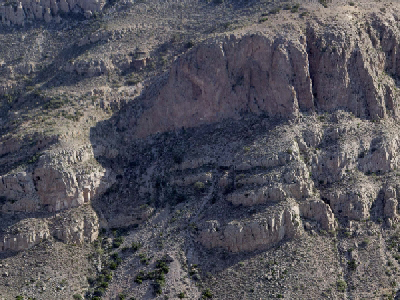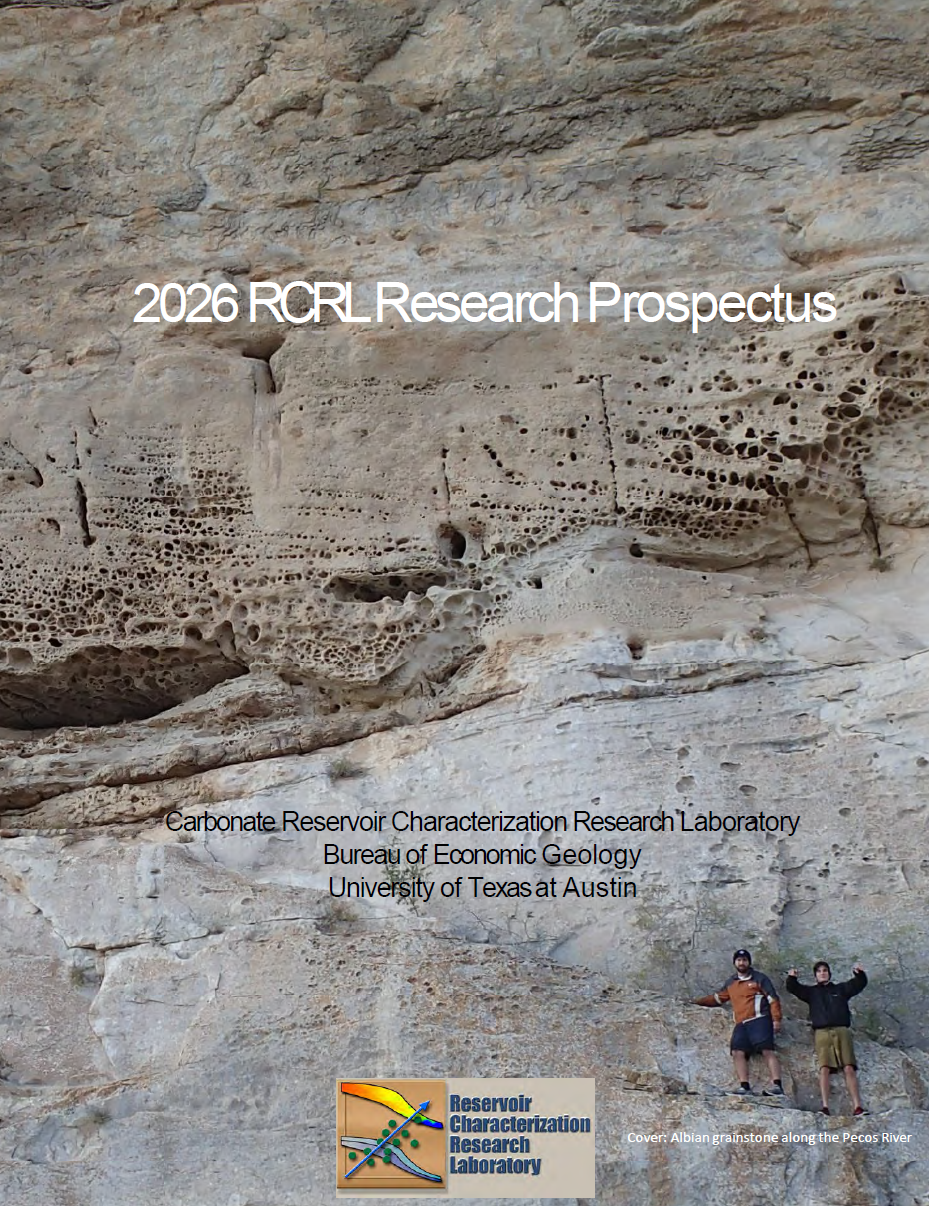RCRL celebrates its 25th anniversary
Between October 7th and October 12th, the RCRL had its 25th annual meeting and celebrated 25 years of carbonate research. The research consortium was initiated by Charles Kerans and F. Jerry Lucia in 1987 and has been continuously active ever since. The RCRL's mission is to use outcrop and subsurface geologic and petrophysical data from carbonate reservoir strata as the basis for developing new and integrated methodologies for better understanding and describing the 3D reservoir environment.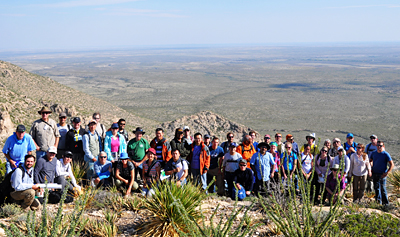
This year's meeting, held in Austin and Carlsbad, NM, was attended by 98 participants from 28 companies that fund the consortium. The meeting started with a core workshop that included 13 cores ranging from Carboniferous to Miocene followed by 2 days of technical presentations. RCRL researchers and students presented results on Cretaceous field in East Texas and Florida, mixed carbonate-siliciclastic system in Indonesia, microporosity, rock mechanic of carbonate sediment and carbonate rock, sedimentology of deep water mud –rock (Eagle Ford), integrated stratigraphic and structural model of the Guadalupian mixed carbonate-siliciclastic of the Guadalupe Mountains, MPS modeling of karst reservoir, and introduction to chemostratigraphy. Eight RCRL students were in attendance, of which 3 had oral presentations (Selin Erzeybek, Sam Hiebert, and Greg Hurd) and 2 (Gordon Smith and Alex Parker) had poster presentations.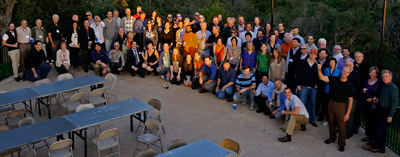
Monday night, RCRL hosted a dinner at the Zilker Club House that provided opportunity for socializing and networking as well as a demo of the new remote hexacopter used for outcrop photography.
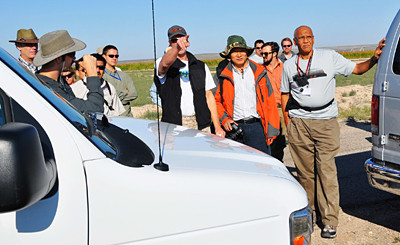
On October 10-12, the RCRL group let 48 participants from 20 sponsor companies and nine UT graduate students on a field trip to the Guadalupe Mountains as part of the 2012 Annual Sponsor's Meeting. The field trip highlighted two somewhat different areas of research in the Guadalupes, first the mid-Guadalupian Grayburg Formation successions of the Shattuck Valley Escarpment and second, the upper Guadalupian Yates-Tansill-Capitan strata in the Walnut to Rattlesnake Canyon area.
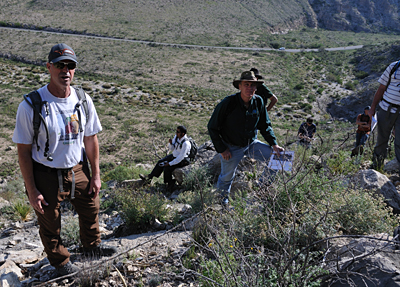
Emphasis on Day 1 was placed on Hiebert's cycle and sequence framework for the Grayburg, and successive profiles of the G10, G11, and G12 HFS were examined using cycle stacking and facies proportion analysis. G11 HST tidally dominated ooid grainstones were an additional focus of Day 1. Only through detailed cycle-scale mapping of large exposures such as the Shattuck Wall can we develop rigorous models of the depositional setting and geobody dimensions of analog reservoir facies. The group handled the hike extremely well and managed to see a unique suite of outcrops on the Shattuck Valley wall.
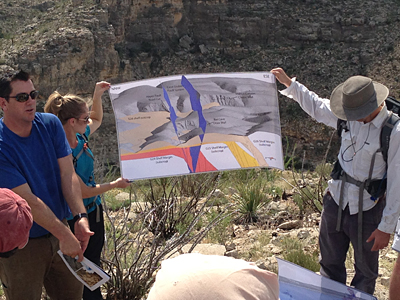
Days 2 and 3 focused on advances in the integrated stratigraphic and structural model of the mixed clastic-carbonate shelf margin in the Late Permian. Day 2 consisted of a loop hike to view the north wall of Rattlesnake Canyon where the G24-G29 composite sequences undergo dramatic changes in facies proportions, bedding dip change and development of significant syndepositional faults and fractures in the 1-2km wide belt between the shelf crest and the slope. Day 3 in Walnut Canyon illustrated the along-strike continuity of both the high-frequency sequences and the syndepositional faults such as the Cave Graben. Participants also recognized the relationship of the integrated model to the much later developed Carlsbad Caverns.
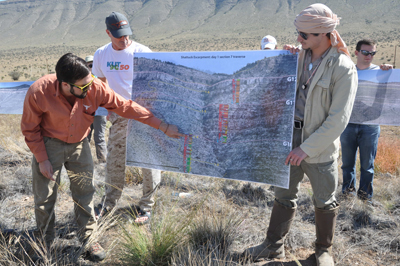 |
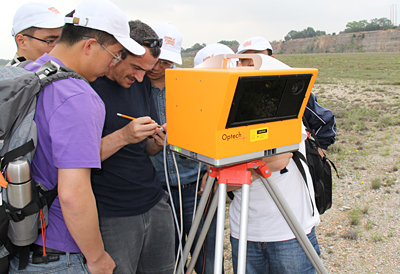
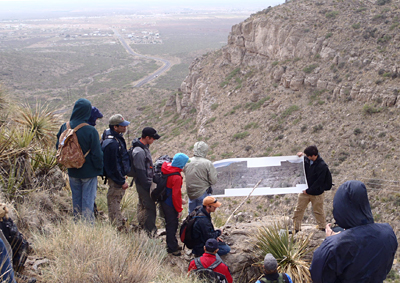
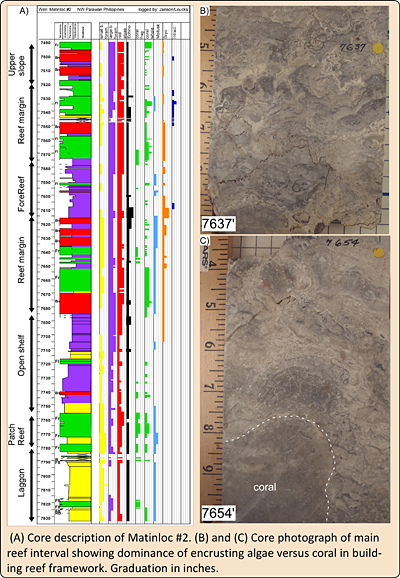
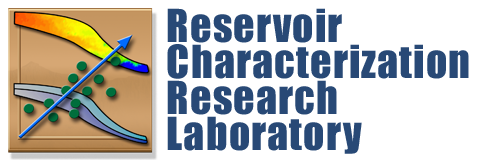






 Logan Pennington
Logan Pennington
